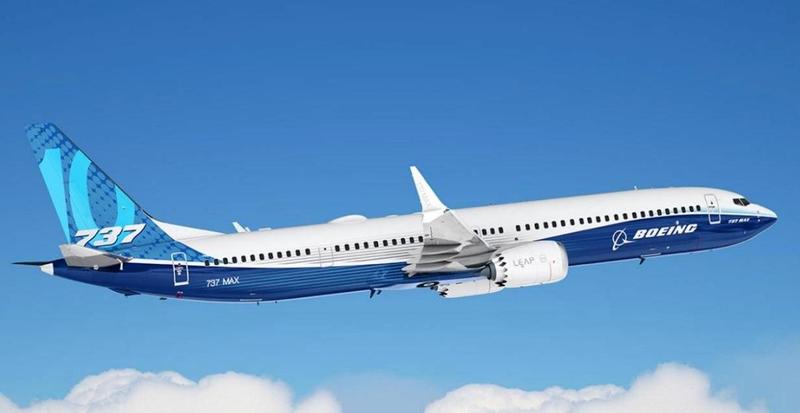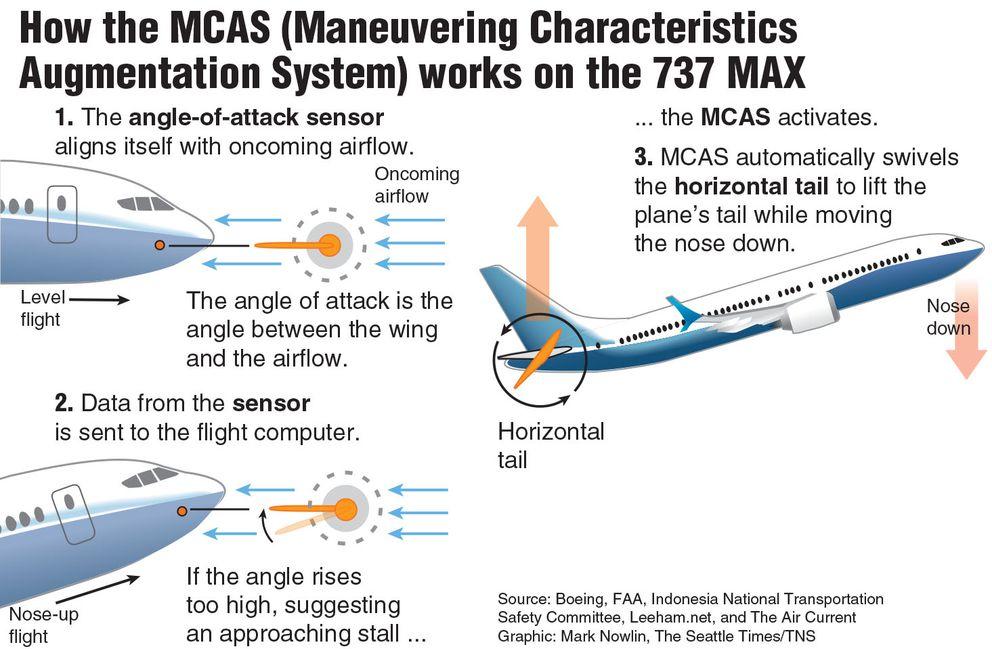News, Ideas, Tips, Great Fixes ......
Boeing Put Profits Before People's Lives.....
From Zero Hedge

Boeing Put Profits Before People's Lives By Hiding 737 MAX Design Flaws From Regulators, Pilots
18 months after Ethiopian Airlines Flight 302 plummeted out of the sky just minutes after takeoff last March, Congressional investigators have finally released a comprehensive report outlining the many mistakes made both by Boeing and the FAA during the certification process.
In the months that have passed, investigators have kept the pressure on Boeing (and its share price) with a steady stream of leaks. We've already seen emails showing Boeing engineers criticizing the 737 MAX 8 design time in some of the harshest terms imaginable (at one point, one irate engineer complained that "the plane was designed by clowns, who were supervised by monkeys".
But the 238-page report, released Wednesday morning by the House Transportation and Infrastructure Committee and its subcommittee on Aviation, breaks it down into five specific broad problems that allegedly led to the deadly accidents, which prompted regulators around the world to ground plane back in March 2019, even after the FAA initially tried to reassure the world that there was 'nothing to see here'.
Below is a summary provided by the committee.
- Production pressures that jeopardized the safety of the flying public. There was tremendous financial pressure on Boeing and the 737 MAX program to compete with Airbus’ new A320neo aircraft. Among other things, this pressure resulted in extensive efforts to cut costs, maintain the 737 MAX program schedule, and avoid slowing the 737 MAX production line.
- Faulty Design and Performance Assumptions. Boeing made fundamentally faulty assumptions about critical technologies on the 737 MAX, most notably with MCAS, the software designed to automatically push the airplane’s nose down in certain conditions. Boeing also expected that pilots, who were largely unaware that MCAS existed, would be able to mitigate any potential malfunction.
- Culture of Concealment. Boeing withheld crucial information from the FAA, its customers, and 737 MAX pilots, including internal test data that revealed it took a Boeing test pilot more than 10 seconds to diagnose and respond to uncommanded MCAS activation in a flight simulator, a condition the pilot described as “catastrophic.” Federal guidelines assume pilots will respond to this condition within four seconds.
- Conflicted Representation. The FAA’s current oversight structure with respect to Boeing creates inherent conflicts of interest that have jeopardized the safety of the flying public. The report documents multiple instances in which Boeing employees who have been authorized to perform work on behalf of the FAA failed to alert the FAA to potential safety and/or certification issues.
- Boeing’s Influence Over the FAA’s Oversight Structure. Multiple career FAA officials have documented examples where FAA management overruled a determination of the FAA’s own technical experts at the behest of Boeing. These examples are consistent with results of a recent draft FAA employee “safety culture” survey that showed many FAA employees believed its senior leaders are more concerned with helping industry achieve its goals and are not held accountable for safety-related decisions.
All these flaws eventually led to the "preventable deaths" of 346 passengers. Boeing repeatedly dismissed warnings and complaints from employees related to MCAS, which was created to compensate for a redesign of the plane's interior to create more space for passengers. One of the flaws was that MCAS relied on a single sensor, which was prone to feeding faulty information.
Why did Boeing need MCAS? Because, as the NYT explains, the engines on the Max are larger and placed higher than on its predecessor, so they could cause the jet’s nose to push upward in some circumstances. MCAS was designed to push the nose back down. In both crashes, the software was activated by faulty sensors, effectively forcing the plane's nose down repeatedly, eventually forcing them into a fatal nosedive.
What's more, Boeing successfully lobbied the FAA to avoid classifying the new software as "safety critical", meaning that the company didn't need to update pilots on how it worked. Some pilots reportedly weren't even aware the software existed before the crashes. Boeing deliberately concealed test data showing that if a pilot took longer than 10 seconds to realize that MCAS had kicked in accidentally, the results would be "catastrophic". Boeing knew all that before the twin crashes that shut down the program...and the company still did nothing. The company also deliberately concealed faulty alerts that would have warned pilots about problems with the sensor used to trigger MCAS.
In a statement, DeFazio blamed Boeing for kowtowing to Wall Street pressure, and putting profits before people's lives.
"Our report lays out disturbing revelations about how Boeing—under pressure to compete with Airbus and deliver profits for Wall Street—escaped scrutiny from the FAA, withheld critical information from pilots, and ultimately put planes into service that killed 346 innocent people. What’s particularly infuriating is how Boeing and FAA both gambled with public safety in the critical time period between the two crashes,” Chair DeFazio said. “On behalf of the families of the victims of both crashes, as well as anyone who steps on a plane expecting to arrive at their destination safely, we are making this report public to put a spotlight not only on the broken safety culture at Boeing but also the gaps in the regulatory system at the FAA that allowed this fatally-flawed plane into service. Critically, our report gives Congress a roadmap on the steps we must take to reinforce aviation safety and regulatory transparency, increase Federal oversight, and improve corporate accountability to help ensure the story of the Boeing 737 MAX is never, ever repeated.”
Rep Rick Larson added that the report, combined with separate findings from regulators in Indonesia and Ethiopia, would help paint a more complete picture of what led to the crash.
One of the most egregious decisions made by Boeing was opposing a requirement that pilots receive simulator training to fly the plane. If pilots needed to be retrained, Boeing would have had to eat some of the cost out of its end of the deal, according to an NYT report. This focus on cost-cutting "drove a lot of really bad decisions," DeFazio said.
The Democrats on the committee also accused Boeing of putting a priority on profits by strongly opposing a requirement that pilots receive simulator training to fly the plane. Under a 2011 contract with Southwest Airlines, for example, Boeing promised to discount each of the 200 planes in the airline’s order by $1 million if the F.A.A. ended up requiring simulator training for pilots moving from an earlier version of the aircraft, the 737NG, to the Max.
“That drove a whole lot of really bad decisions internally in Boeing, and the F.A.A. did not pick up on these things,” Mr. DeFazio said.
The report alleges that the 'time pressure' imposed on the 737 MAX project was unusually intense. Keith Leverkuhn, former Boeing VP and General Manager of the MAX program, allegedly kept "a countdown clock" in a conference room, which he allegedly described as an "excitement generator".
"One of the mantras that we had was the value of a day,” he said, “and making sure that we were being prudent with our time, that we were being thorough, but yet, that there was a schedule that needed to be met…" one Boeing worker said.
Back in 2012, in order to lower development costs, Boeing reduced the work hours involved in the MAX's avionics regression testing by 2,000 hours. It also examined other reductions to save costs, including a reduction to flight test support by 3,000 hours.
Boeing doesn't shoulder the blame alone. According to the report, the FAA "failed to ensure the safety of the traveling public" as "excessive" outsourcing had "impaired [the FAA] from acting independently."
The report comes as regulators are reportedly close to finally lifting the grounding order by approving the newly redesigned MAX; the expectation is that the plane might be back in service before the end of the year.
In addition to the report, Congress has introduced legislation that would toughen the agency's certification process, in part by requiring that it carry out regular independent audits on company-employed representatives.
Responding to the allegations in the report, the FAA said it "is committed to continually advancing aviation safety and looks forward to working with the committee to implement improvements identified in its report.” Boeing, meanwhile, said it had learned lesson. "Boeing cooperated fully and extensively with the committee’s inquiry since it began in early 2019. We have been hard at work strengthening our safety culture and rebuilding trust with our customers, regulators and the flying public.”
But like we've learned from Sweden's approach to the pandemic: Just because people have the option of doing something, doesn't mean they will. The 737 MAX 8 has such negative associations, that President Trump suggested Boeing rename the plane, and the company has been quietly working on a rebranding effort.
After failing to ring up even a single order for the MAX in 2020, Boeing finally celebrated a small order from Enter Air, a Polish charter airline, a few weeks ago. However, recent reports about alleged design flaws with the aerospace giant's 787 Dreamliner, and other Boeing planes, could create lingering problems for shares even after the 737 MAX is back in the skies.
Read the full report here.
When you subscribe to the blog, we will send you an e-mail when there are new updates on the site so you wouldn't miss them.
